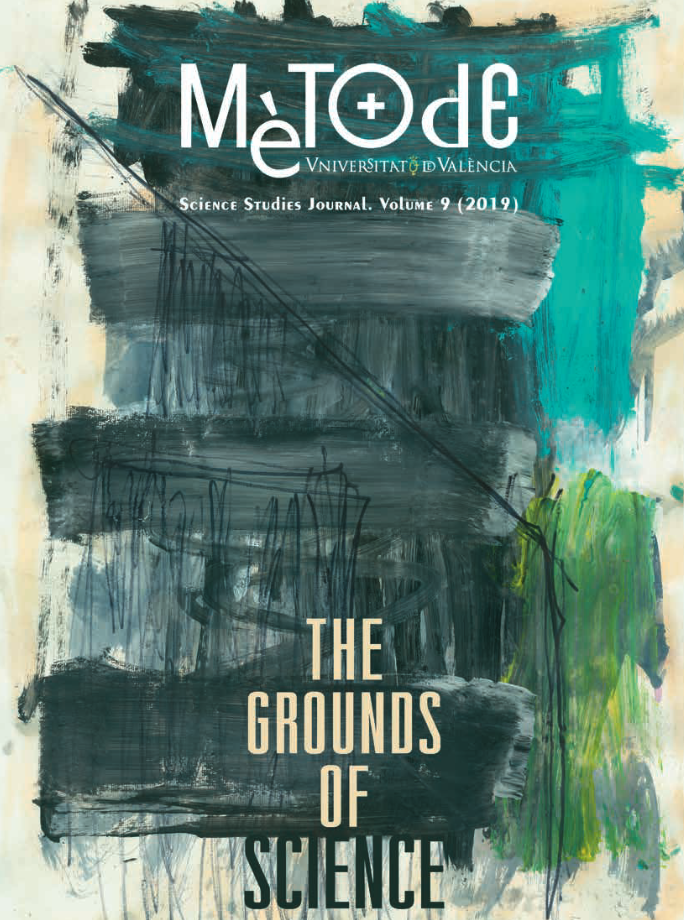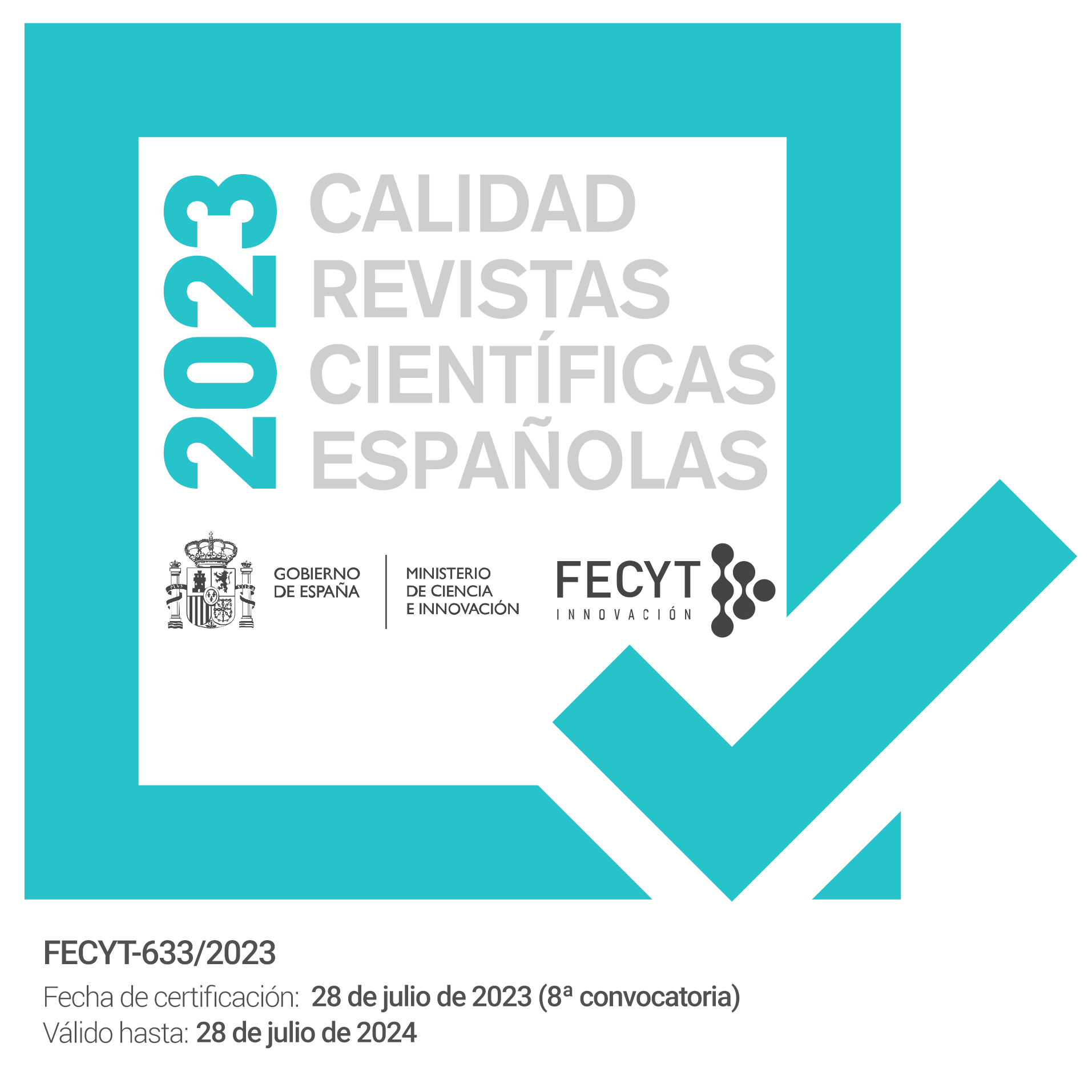Biotechnology and communication in democratic societies: Old challenges for a new era
DOI:
https://doi.org/10.7203/metode.9.10388Keywords:
science law, popularisation, science communication, journalism, biotechnology Abstract
Abstract
Biotechnological research has made significant progress; however, some of its results are controversial because of their health and environmental risks, and these limit their application because of the precautionary measures applied to them. The dissemination and communication of information about biotechnology is now more necessary than ever to spread knowledge about innovations clearly, rigorously, and comprehensibly. At the same time, we must also inform about the certainties, uncertainties, and potential conflicts of interest these technologies pose in order to properly disseminate the available scientific evidence and promote autonomous, free, and informed decision-making: a key objective in any democratic society.
 Downloads
Downloads
 References
References
Constitución española, de 29 de diciembre. (1978). Retrieved from https://www.boe.es/buscar/pdf/1978/BOE-A-1978-31229-consolidado.pdf
Calvo Hernando, M. (1999). El nuevo periodismo de la ciencia. Mexico: Ediciones Ciespal.
Chueca, R. (Dir.). (2013). La investigación científica como derecho fundamental. Granada: Editorial Comares.
Deer, B. (2011). How the case against the MMR vaccine was fixed. British Medical Journal, 342, c5347. doi: 10.1136/bmj.c5347
De Semir, V., & Revuelta, G. (2005). El Dr. Hwang y el clon que nunca existió. Quark, 37–38, 105–123.
European Commission. (2010). Special Eurobarometer. Biotechnology. Brussels: TNS Opinion & Social. Retrieved from http://ec.europa.eu/commfrontoffice/publicopinion/archives/ebs/ebs_341_en.pdf
Fundación BBVA. (2012). Estudio internacional de cultura científica de la Fundación BBVA. Retrieved from https://www.fbbva.es/wp-content/uploads/2017/05/dat/Cultura_cientifica_-_Nota_larga_-_07-05__2__FINAL_.pdf
Fundación Española para la Ciencia y la Tecnología. (2017). VIII Encuesta de percepción social de la ciencia, 2017. Madrid: Editorial MIC. Retrieved from https://www.fecyt.es/es/publicacion/percepcion-social-de-la-ciencia-y-la-tecnologia-en-espana-2016
Gaskell, G. (2000). Agricultural biotechnology and public attitudes in the European Union. AgBioForum, 3(2&3), 87–96. Retrieved from http://www.agbioforum.org/v3n23/v3n23a04-gaskell.htm
Hwang, W. S., Ryu, Y. J., Park, J. H., Park, E. S., Lee, E. G., Koo, J. M., … Moon, S. Y. (2004). Evidence of a pluripotent human embryonic stem cell line derived from a cloned blastocyst. Science, 303(5664), 1669–1674. doi: 10.1126/science.1094515 (Retracted in 2006, Science, 311(5759), 335. doi: 10.1126/science.1124926
Jaunmuktane, Z., Mead, S., Ellis, M., Wadsworth, J. D. F., Nicoll, A. J., Kenny, J., … Brandner, S. (2015). Evidence for human transmission of amyloid-β pathology and cerebral amyloid angiopathy. Nature, 525, 247–250. doi: 10.1038/nature15369
Ley 14/2011, de 1 de junio, de la Ciencia, la Tecnología y la Innovación (2011). Retrieved from https://www.boe.es/buscar/pdf/2011/BOE-A-2011-9617-consolidado.pdf
Muñoz, E. (2002, 30 May). La cultura científica, la percepción pública y el caso de la biotecnología. Seminar «La cultura científica en la sociedad de la información», University of Oviedo. Retrieved from http://digital.csic.es/bitstream/10261/1503/1/dt-0207.pdf
Real Academia Española. (2017). Cultura. In Diccionario de la lengua española (23ª ed.). Retrieved from http://dle.rae.es/?id=BetrEjX
Taylor, L. E., Swerdfeger, A. L., & Eslick, G. D. (2014). Vaccines are not associated with autism: An evidence-based meta-analysis of case-control and cohort studies. Vaccine, 32(29), 3623–3629. doi: 10.1016/j.vaccine.2014.04.085
United Nations. (1948). Universal declaration of human rights. Retrieved from http://www.un.org/es/universal-declaration-human-rights
United Nations. (1966). International Covenant on Economic, Social and Cultural Rights. Office of the United Nations High Commissioner for Human Rights (OHCHR). Retrieved from http://www.ohchr.org/SP/ProfessionalInterest/Pages/CESCR.aspx
University College London. (2015, 10 September). Possible evidence for human transmission of Alzheimer’s pathology [press release]. Retrieved from http://www.ucl.ac.uk/news/news-articles/0915/100915-possible-evidence-alzheimers-pathology
Wakefield, A. J., Murch, S. H., Anthony, A., Linnell, J., Casson, D. M., Malik, M., … Walker-Smith, J. A. (1998). Ileal-lymphoid-nodular hyperplasia, non-specific colitis, and pervasive developmental disorder in children. The Lancet, 351(9103), 637–641. doi: 10.1016/S0140-6736(97)11096-0 (Retracted in 2010, The Lancet, 375(9713), 445. doi: 10.1016/S0140-6736(10)60175-4
Downloads
Additional Files
Published
How to Cite
-
Abstract4833
-
Untitled (Español)1
-
PDF833
Issue
Section
License
![]()
All the documents in the OJS platform are open access and property of their respective authors.
Authors publishing in the journal agree to the following terms:
- Authors keep the rights and guarantee Metode Science Studies Journal the right to be the first publication of the document, licensed under a Creative Commons Attribution-NonCommercial-NoDerivatives 4.0 International License that allows others to share the work with an acknowledgement of authorship and publication in the journal.
- Authors are allowed and encouraged to spread their work through electronic means using personal or institutional websites (institutional open archives, personal websites or professional and academic networks profiles) once the text has been published.





